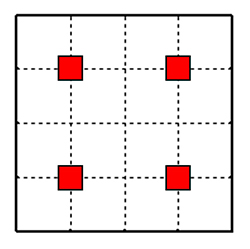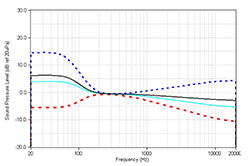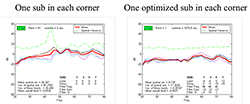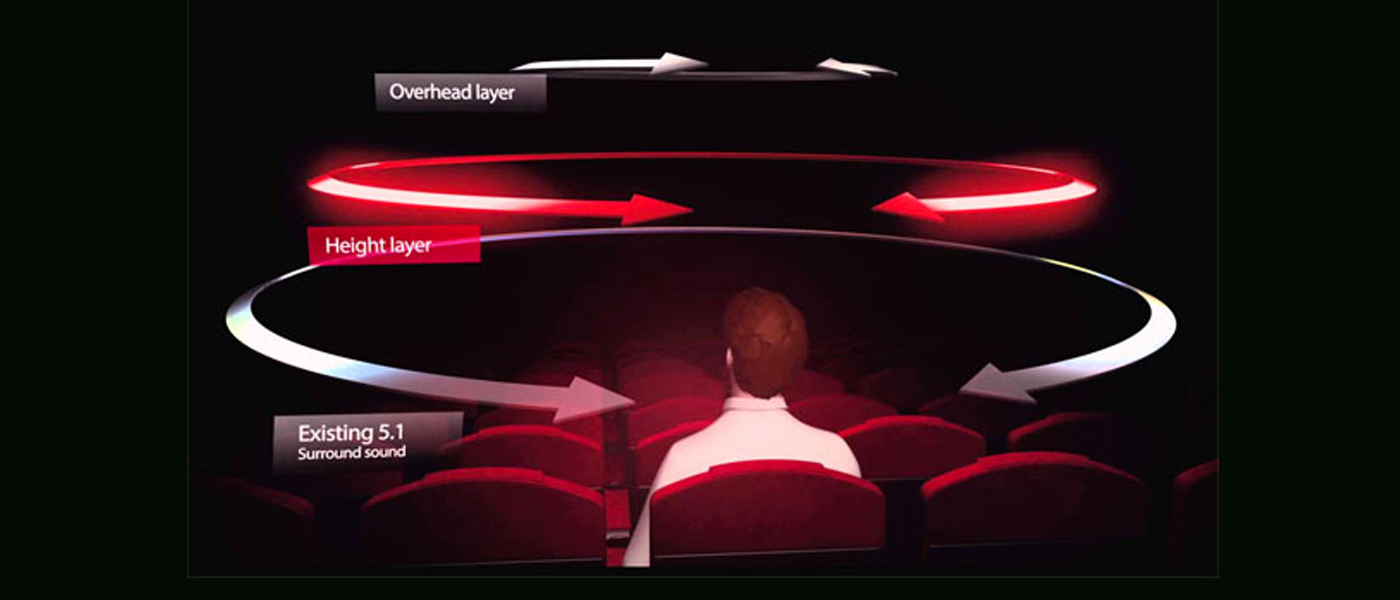Q&A with Todd Welti (Principal Engineer in Acoustics, Harman Corporate Technology Group) & Kevin Voecks (Manager of Product Development, Harman Luxury Audio Group)
Todd, when did you join Harman, and what led you to join the company?
Todd: I joined Harman in 2000, after I finished my Master’s degree in Acoustics from Aalborg Universitet.
I had been reading Floyd Toole and Sean Olive’s papers for years, and been greatly impressed. When I got a chance to interview for a position, I jumped at the chance!
Sumit: What led to the work on your paper, “Subwoofers: Optimum Number and Locations”?
Todd: I had attended a convention where a speaker manufacturer was advocating the use of something like 20 subwoofers in a room. Floyd and I were wondering whether there was any real advantage to such an approach. Floyd wound me up and pointed me in the right direction by saying, “Why don’t you look into it and make some controlled tests”. I did not realize at the time how much interest would be generated.


Figure 1: Seat to seat variation for two subwoofer configurations: single subwoofer placed in the corner (top); 4 subwoofers placed at wall midpoints (bottom).
Sumit: In this research, you explored and ranked several configurations. Please talk about the configurations that stood out.
Todd: The sub in one corner configuration consistently stood out as bad for seat to seat consistency – the main focus of the study. Four subs at the wall midpoints stood out as being very consistent. The only more consistent configuration I found was the “Toole” configuration, suggested by Floyd. Here you have subs located diagonally in from the corners ¼ of the room length and width. This puts the subs away from the walls and is not too practical, but gives very consistent responses across the seating area.

Figure 2: “Toole” configuration
Sumit: One configuration where two subwoofers were located diagonally opposite to each other did not fare well. In principle, this should have resulted in the cancellation of the maximum number of room modes. Do you have any insight into this?
Todd: That configuration wasn’t horrible, just not as good as the wall midpoints. As I noted in the paper, that configuration should have done as well as the 2 wall midpoints if the criteria is just the number of axial modes not energized was the same. The reality is much more complicated, with tangential modes having some effect and especially interaction BETWEEN the modes, which causes much of the actual variation in response from one seat to the next.
Sumit: Was any distance and/or phase compensation factored into your model for each subwoofer?
Todd: In that paper, the subs were assumed to be identical and all getting the same signal, so no difference in phase there. As for the room response, phase and distance are accounted for in the simulations.
Sumit: What about the direction that the drivers faced? Would this matter?
Todd: Not much. If the “reversed” sub was too close to the wall, the acoustical loading could be affected. Other effects would be small I think. Remember we are low passing at 80 Hz.
Sumit: For seating configurations, you looked at two options. One was in the center of the room, the other towards the back of the room. The optimal subwoofer number/placement was for the most part independent of the seating configurations. Did you look at what the best locations/configurations for the seats would be for the two best (two/four subwoofers at the wall mid-points) configurations?
Todd: This is probably the place to make a pitch for more recent work I have done on this subject. The “How Many Subwoofers is Enough” paper focused mostly on one set of room dimensions. In section 3.5 I did make an attempt to address differing room dimensions but was not able at that time to do a real systematic investigation including a realistic range of room dimensions.
Recently I came back around to that, rewrote my simulation software to be even more powerful, and did such an investigation. The result is “Optimal Configurations for Subwoofers in Rooms Considering Seat to Seat Variation and Low Frequency Efficiency”, Todd Welti, AES convention paper 8748, Oct 2012. This is the logical continuation of the original paper. It includes 7 seating configurations, and 7 subwoofer configurations. For each combination of these, 625 different rooms with different dimensions were simulated (over 36,000 rooms in all). Instead of just 9 “seats”, a cloud of receivers, typically several hundred, was simulated in each of these rooms to more accurately represent the seating area.
Metrics for seat to seat variation, smoothness of frequency response, and bass efficiency were calculated for all of these. The result is a compendium of simulations that can be used for design of new rooms or optimization of existing ones. Results show the room dimensions to be very important and they can now be accounted for. Simulation results are available here.

Figure 3: Multi-subwoofer configurations in the study; of these, the last configuration was the most consistent from a seat to seat variation standpoint
Sumit: You also proposed a new metric that factored in low-frequency output. Can you describe the new metric?
Todd: Yes, that was the other area where I felt my original investigations needed fleshing out. I wanted to come up with a single figure of merit that combined the Mean Spatial Variance (seat to seat variation) and Mean Output Level (low frequency efficiency). This metric is called MSVMOL. Essentially, the way the metric is calculated, if the seat to seat variation (MSV) is too high, the resulting metric is “-inf”, meaning it is simply unacceptable. If the MSV is below a certain threshold, no further reductions are relevant, and the MSVMOL is then based solely on the MOL. In between these two points both are factored together to get the MSVMOL. I’m not sure if this metric will catch on or not, as there is a certain amount of arbitrariness to it. (Figure 4)

Figure 4: Simulation result for a given seating and subwoofer configuration. Blue regions in the plots correspond to room dimensions which are preferred, i.e. lower MSV or lower VSA or higher MOL.
Sumit: In addition to the metric, you also considered some new subwoofer and some common seating configurations. Was there a particular subwoofer/seating configuration that performed best?
Todd: Ignoring room dimensions for a moment and averaging results together, the “4C” (subs in 4 corners) and FBQ (front back quartal performed well using the “SC” (small center) seating configuration.
Sumit: Have you looked at the tradeoff between the size of the seating area and seat to seat variation?
Todd: Generally, the larger seating area has more seat to seat variation, but not in all cases.
Sumit: The work that you did applies to rectangular rooms. For non-standard rooms, would you recommend using modeling software like FLO and CARA?
Todd: FLO is certainly interesting, and in theory should be able to give a pretty good idea what will happen in a given room. Cost may be prohibitive for some. I haven’t used CARA for a while, but I believe it is based on image source modeling, i.e. specular reflection assumption. For non rectangular rooms this might not be valid. Maybe for simpler rooms it might work. The other problem with CARA is that I don’t believe it allows one to optimize multiple subwoofers for multiple seats at the same time (i.e. evaluating MSV). Still could be useful though.
Sumit: Do you plan to make your software available for download? Some folks (like myself) have Matlab!
Todd: At this point, the code still has a couple of idiosyncrasies that make it unfit for general release. I would want to do a lot more work on it to make it more foolproof before releasing.
Sumit: Many Room EQ systems include a target response curve. Have you done any preference studies on this?
Todd: Yes, Sean Olive, Elisabeth McMullin and myself did a paper, actually on preferred response for headphones, where we did a method of adjustment test in a reference room with stereo loudspeakers. The paper is “Listener Preferences for In-Room Loudspeaker and Headphone Target Responses”, S. Olive, T. Welti and E. McMullin, AES convention paper 8994, Oct 2013. Subjects were allowed to adjust shelving filters in real time as they listened to several different programs in our reference listening room. The filters were: a bass shelving filter at 105 Hz, and a treble “tilt” filter at and above 2.5 kHz. There was a fair amount of variation from subject to subject, but if you averaged it all out, you get a bass boost of around 6 dB and a gently rolling off high end, around -2.5 dB at 10 kHz. (Figure 1)

Figure 5: Preferred in-room loudspeaker (black) and headphone (cyan) target response curves. Dotted lines indicate the upper/lower limits of bass/treble adjustments.
Sumit: I’d like to spend some time discussing subwoofer setup in real rooms. Many subwoofers offer phase, level and polarity controls, however, most processors do not offer independent control of these settings (and distance) for each subwoofer. In such cases, how should these controls be set?
Kevin: Most subwoofers offer “phase controls” which only vary the phase over a narrow range around the crossover frequency. They are worth little in terms of optimizing a system. What is needed are true delay controls that are independent per subwoofer. The Revel Ultima Rhythm2, Performa (Series 3) B110 and B112 subwoofers all use the same DSP arrangement, which provides continuously variable true delay, and ten bands of fully parametric EQ per subwoofer.
Sumit: RoomEQ systems have become quite prevalent and sophisticated over the years. If you have RoomEQ available on both the subwoofer and the SSP, would you engage it on one or both places?
Kevin: That is a tough question, just because most room EQ systems do not work very well. My recommendation would be to run the built-in room EQ system and then use our subwoofer EQ to achieve the desired (target) response. If using multiple Revel subwoofers, a better result will be achieved if the user adjusts the relative delay of each subwoofer using the included “LFO” (Low Frequency Optimizer) software before running the auto-EQ in the SSP.
Sumit: Several Revel subwoofers now offer RoomEQ capability. What is the recommended setup procedure for multiple subwoofers with your system?
Kevin: The “DIY” process is to set the processor’s sub delay to zero, and then to set the delays in each subwoofer, based upon their distance to the primary listening position. From that point on, they are treated as if they were a single transducer. The listener will gain the advantages of multiple subwoofers, as proven in Todd’s papers, as well as avoiding overload that usually occurs when users make the mistake of running their subwoofers from independent main channels, such as pairing subs with the front left and right speakers, and either the side or rear surrounds.
Using proper bass management techniques, the LF “load” is shared by all the subwoofers—regardless of which channel(s) the LF content is located on the media. This reduces distortion and dynamic compression dramatically. (Dynamic compression is the phenomenon of a speaker’s response changing at varying acoustic output levels.)
Some Revel dealers have the “ARCOS” measurement and coefficient calculation system, which can take the three Revel subwoofers previously mentioned to new sonic heights. It works by first characterizing the listening area in a particularly precise manner. Then, it calculates unique combinations of subwoofer settings (“SFM” or Sound Field Management) that reduce the seat to seat variations.
The technician then manually programs each subwoofer with the calculated results from ARCOS, which results in very low spatial variations. Once that is accomplished, global EQ is done which will optimize the LF response at not just at one listening position, but throughout the listening area. This is a time-consuming process, but the result is very audibly superior to anything that can be achieved with typical subwoofers.
Sumit: What subwoofer parameters are considered in SFM?
Todd: The original version of SFM that Allan Devantier and I developed actually allowed the user to measure as many potential sub locations as they wanted and would select the best combination of actual locations to use according to how many actual subs you had. On top of that, level, delay, and single parametric filter settings for each subwoofer were optimized. In ARCOS, only the individual level, delay and single filters are optimized, i.e. the sub locations are fixed.

Figure 6: Seat to seat variation without and with Sound Field Management
Sumit: What is your thought on stereo bass?
Todd: I am personally not a big believer in stereo bass. I did some research a few years ago and setup some very sensitive and well controlled listening tests, where I went out of my way to allow the listeners to detect the difference and show a preference. For the most part, excepting contrived signals (warble tones) which are unnatural, subjects could not detect the difference. There are also disadvantages inherent in not using bass management.
Sumit: Does the capability (precision/number of filters) vary across your different subwoofer models?
Kevin: No. The Rhythm2, B112 and B110 use the same high-resolution 10-band DSP system. The difference is only in the amplifier power.
Sumit: How many filters are available for each channel on ARCOS?
Kevin: 20 bands of fully-parametric EQ are available for each speaker, with a bandwidth range of from 1/100th octave to four octaves.
Sumit: Is the target response curve used by ARCOS and LFO similar to what was found in the Harman study that Todd referenced earlier? (Figure 4)
Kevin: It is exactly the same. Note that the high frequency tilt is similar to what is normally seen in-room with speakers that measure flat in an anechoic chamber. Therefore, EQ above approximately 400Hz is often not performed. Some loudspeakers are designed such that full-range EQ is always required, but that can be limited above around 400Hz to an anechoic correction only. It is interesting to note that my anecdotal experiences as well as other Harman personnel had led to almost identical targets.
Sumit: Can you say when we might see ARCOS integrated into a Lexicon/ML/JBL processor?
Kevin: We have a policy not to talk about our product planning until a product is nearing production. Therefore, I cannot say whether such a product is in the long-term product plan or not.
Sumit: Is there any other work on subwoofers/bass-reproduction going on at Harman that you would like to talk about?
Todd: As for me, I’m certain I will come back around to it. I would like to investigate subwoofer height, since I have always assumed single subs on the ground; also dipole and cardioid subwoofers. These are interesting since they have a velocity component, so the way they couple to the room can be different and can be changed by simply rotating the subwoofers. Cool!
Kevin: We are constantly looking at ways to improve the performance and ease-of-use of our subwoofers and EQ systems. We make improvements to our ARCOS system regularly.
Sumit: Thank you, Todd and Kevin, for this informative Q&A.


